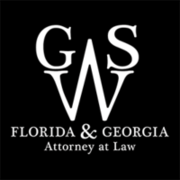(1) To the extent allowed by law, unless specifically prohibited by the declaration or other recorded governing documents, and consistent with s. 617.0830, the board of directors, in response to damage or injury caused by or anticipated in connection with an emergency, as defined in s. 252.34(4), for which a state of emergency is declared pursuant to s. 252.36 in the area encompassed by the association, may exercise the following powers:(a) Conduct board meetings, committee meetings, elections, or membership meetings, in whole or in part, by telephone, real-time videoconferencing, or similar real-time electronic or video communication after notice of the meetings and board decisions is provided in as practicable a manner as possible, including via publication, radio, United States mail, the Internet, electronic transmission, public service announcements, conspicuous posting on the common area, or any other means the board deems appropriate under the circumstances. Notice of decisions may also be communicated as provided in this paragraph.
(b) Cancel and reschedule an association meeting.
(c) Designate assistant officers who are not directors. If the executive officer is incapacitated or unavailable, the assistant officer has the same authority during the state of emergency as the executive officer he or she assists.
(d) Relocate the association’s principal office or designate an alternative principal office.
(e) Enter into agreements with counties and municipalities to assist counties and municipalities with debris removal.
(f) Implement a disaster or an emergency plan before, during, or following the event for which a state of emergency is declared, which may include, but is not limited to, turning on or shutting off elevators; electricity; water, sewer, or security systems; or air conditioners for association buildings.
(g) Based upon the advice of emergency management officials or public health officials, or upon the advice of licensed professionals retained by or otherwise available to the board, determine any portion of the common areas or facilities unavailable for entry or occupancy by owners or their family members, tenants, guests, agents, or invitees to protect their health, safety, or welfare.
(h) Based upon the advice of emergency management officials or public health officials or upon the advice of licensed professionals retained by or otherwise available to the board, determine whether the common areas or facilities can be safely inhabited, accessed, or occupied. However, such determination is not conclusive as to any determination of habitability pursuant to the declaration.
(i) Mitigate further damage, injury, or contagion, including taking action to contract for the removal of debris and to prevent or mitigate the spread of fungus, including mold or mildew, by removing and disposing of wet drywall, insulation, carpet, cabinetry, or other fixtures on or within the common areas or facilities or sanitizing the common areas or facilities.
(j) Notwithstanding a provision to the contrary, and regardless of whether such authority does not specifically appear in the declaration or other recorded governing documents, levy special assessments without a vote of the owners.
(k) Without owners’ approval, borrow money and pledge association assets as collateral to fund emergency repairs and carry out the duties of the association if operating funds are insufficient. This paragraph does not limit the general authority of the association to borrow money, subject to such restrictions contained in the declaration or other recorded governing documents.

